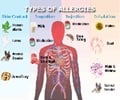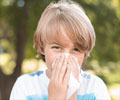Contact dermatitis is an allergic reaction caused to many human beings. A new Mayo Clinic study reveals the most common causes of allergic contact dermatitis.
Contact dermatitis is an allergic reaction caused to many human beings. A new Mayo Clinic study reveals the most common causes of allergic contact dermatitis. The exact definition of contact dermatitis is that it is a skin inflammation resulting in swollen, reddened and itchy skin due to direct contact with an allergen.
The ten allergens identified by the mayo study are as follows:-• Nickel (nickel sulfate hexahydrate
• Gold (gold sodium thiosulfate)
• Balsam of Peru (myroxylon pereirae)
• Thimerosal
• Neomycin sulfate
Advertisement
• Formaldehyde
• Bacitracin
• Quaternium 15
The study also confirmed that patch testing with a standard contact dermatitis series of substances is useful for identifying common contact allergens. The study confirmed previous findings by the North American Contact Dermatitis Group.
Contact dermatitis testing results from 3,854 patients over a five-year period between Jan. 1, 2001 and Dec. 31, 2005 were studied for the study. The patients were tested with an average of 69 allergens. Of these patients, 2,663 (69 percent) had at least one positive reaction, and 1,933 (50 percent) had two or more positive reactions.
Contact dermatitis is common among all age groups and can cause minor annoyance to more severe handicaps, according to Mark Davis, M.D., Mayo Clinic dermatologist and lead study researcher. "Patients with contact dermatitis can get a very itchy rash from head to toe, or in a confined area," he says. "If it's on the hands and feet it can be disabling, and patients at times can't do their jobs."











